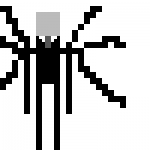Despite describing behaviour that spans the entirety of human existence, the word ‘folklore’ is a relatively new one. Its creation is credited to the English writer William Thoms, who in an 1846 missive to The Athenaeum replaced more cumbersome descriptives of the age—“popular antiquities” being the most prominent—with this new term.
Loosely speaking, “folklore” is an umbrella term for stories that are transmitted from one person to another. Examples include conspiracy theories, fairy tales and ghost stories.
The word is a literal admission that to be human is to tell stories. The years pass and technology changes. The urge, however, has not.
Take, for instance, Creepypasta: the term given to the phenomenon of telling horror stories online. Creepypasta is a portmanteau of the words “creepy” and “copypasta,” itself an internet-era term coined on the ever creative, often controversial 4chan messageboard to describe the copy-and-pasting of text around the internet.
Creepypasta has existed for well over a decade now, but its most significant foray into mainstream culture came in 2014 when tragedy intersected with creativity and brought Creepypasta’s Big Bad, Slenderman, to an audience beyond online communities like Reddit (and the imaginations of internet-savvy teenagers).
Slenderman was born on June 10, 2009, on the forum of a website known for its dark humour, named, prophetically, Something Awful. That day, the website was hosting a paranormal-themed Photoshop competition, encouraging users to create digitally altered creepy images. Using the pseudonym Victor Surge, user Eric Knudsen uploaded his contribution, in which a gaunt, spectral figure in a suit—Slenderman—was added to two weathered photographs of children playing.
Knudsen included a couple of snatches of text, presenting the photos as a historical artefact in the tradition of the 1967 Patterson-Grimlin Bigfoot footage or Colonel Robert Kenneth Wilson’s grainy 1934 photo proclaiming evidence of the Loch Ness Monster. Knudsen wrote that the mysterious figure stalked children. His contribution was well-received by other users. So far, so creative.
Yet just under five years later, two 12-year-olds from Waukesha, Wisconsin named Anissa Weier and Morgan Geyser, lured their friend Payton Leutner into the woods and stabbed her nineteen times. The teens later claimed that the murder had been demanded by Knudsen’s Slenderman. Earlier this year, Geyser was sentenced to spend 40 years in a mental hospital. Weier will spend 25 years in a similar institution.
It’s here that Slenderman’s relevance to the evolution to folklore becomes significant. The story of Slenderman started like any example of the medium: take away the mechanics that led to his creation, and it’s not difficult to imagine the transmission of his story from campfire, to village, to traveller and beyond a thousand years ago.
But the mechanics are important. This wasn’t one villager telling another. This was one avatar telling a thousand or more.
The transmission was still collaborative, but Slenderman’s mythology grew as fast as his profile. In this way, the oral transmission that had supported folklore for generations was replaced with a new architecture.

In terms of what happened in Wisconsin in 2014—and depending on your conviction regarding such matters, the sentencing—the case of Anissa Weier and Morgan Geyser is an extreme one. Poor mental health undoubtedly facilitated the tragedy; when Weier had first become interested in Creepypasta stories, she had allegedly asked her father, “how can my brain let me do this?”
Slenderman’s ascent shows no sign of slowing down. Next month, a major motion horror picture entitled Slender Man will be released into cinemas worldwide, starring Spanish actor Javier Botet, whose Marfan syndrome has contributed to his extremely tall, thin build (the actor is 6’ 6” and only 123 pounds) and uniquely equipped him for the role.
There are other films about the figure, too, including a true crime documentary made by HBO in 2017 entitled Beware The Slenderman. Yet the most interesting film is perhaps that which slipped quietly onto the internet this month: A Self-Induced Hallucination.
Unlike the others, this film is made entirely from Slenderman content plucked from the internet. It raises the suggestion of Slenderman as a type of “tupla”: a mystical Buddhist concept which suggests that real-life presences can be created through thought. The film proposes that Slenderman is a sort of digital tupla—akin, perhaps, to the forces that converted the once-innocent Matt Furie cartoon Pepe the Frog into a sneery symbol of the alt-right.
What the film also does—via YouTube ripped footage of children singing odes to Slenderman directly into their computer’s camera; or by seeing a pixelated Slenderman exploring worlds created in popular world-building game Minecraft—is establish that for this ages current generation, Slenderman is an icon of their childhood. They grew up with him just like they did Harry Potter and Pokemon.

A key detail of folklore is that the stories shared represent fears within the era in which they’re conceived. 1950s stories of lovers’ lane attackers spoke to fears about teenage promiscuity, for instance. Shira Chess, author of 2014’s “Folklore, Horror Stories, and the Slender Man: The Development of an Internet Mythology” and a lecturer in Journalism and Mass Communications at the University Of Georgia, has suggested Slenderman is a metaphor of “helplessness, power differentials and anonymous forces.”
She has a point. Slenderman’s blank face is suited to any fear you might project onto it, but being always present, always watching—suggests a unique sort of fear, one that lends itself to the digital world young people inhabit. He is the boogeyman for an age of digital anxiety. Depressingly, for two girls from Wisconsin who spent a lot of time isolated and online, he appears to have been a sort of friend too.
It’s no coincidence that as soon as Geyser and Weier’s crime was linked to Slenderman, forums hosting Creepypasta content began to enthusiastically declare that the works contained within were most definitely the work of fiction. Folklore has never been big on fact checking, but in an age where we can’t trust the authenticity of our news, what chance do we have to understand mythology?
It is this, much more than the ubiquity of Slenderman in our children’s lives, that is most disturbing.












